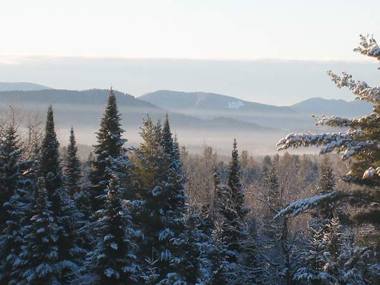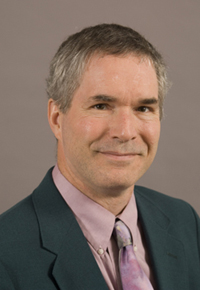Building Pollution Measurement Systems to Improve Adirondack Air Quality and Reduce Incidence of Asthma
 |
|
James Schwab's project will examine air quality in the Adirondacks. (Photo Richard Brandt, Atmospheric Sciences Research Center)
|
ALBANY, N.Y. (April 8, 2015) -- While humans have burned wood for warmth since the dawn of civilization, it is only recently that wood smoke pollution has been more closely examined. University at Albany atmospheric scientist James Schwab will examine the impact of wood smoke on air quality in the Adirondacks, where wood remains one of the chief sources of heat in rural communities.
"Wood smoke is a significant contributor to the overall particle pollution in large areas of upstate during the winter months," said Schwab, a senior research associate at the Atmospheric Sciences and Research Center (ASRC). "Our project goal is to collaborate with the Department of Environmental Conservation to build portable and flexible measurement systems for responding to local air pollution concerns."
 |
|
Atmospheric Scientist James Schwab
|
The research is supported by a $510,000 contract from the New York State Energy and Research Development Authority.
Schwab is also partnering with Assistant Professor Eric Leibensperger of SUNY Plattsburgh and Associate Professor Huiting Mao of the SUNY College of Environmental Science and Forestry on a proposal to the SUNY Research Foundation on Adirondack air quality and climate.
Both studies will examine the effects of wintertime wood smoke on Adirondack air quality, using portable, low-cost sensors to measure community exposure to pollutants, especially ozone, carbon monoxide, particulate matter (PM), and volatile organic compounds (VOCs). Based on work being done elsewhere in the Northeast, there is already a clear connection between wood heating, air quality, and asthma.
With wood burning remaining the primary source of heat for many people in the Adirondacks, and recorded data on climatic and atmospheric conditions dating back nearly 50 years, the region is an ideal location for examining the impact of wood smoke.
Using a Global Forecast System to Examine Impact of Aerosols
The air pollution projects are two of several at ASRC that is looking at the relation between air pollution and climate change. Research Associate Dr. Cheng-Hsuan Lu has received a grant for $140,125 from the National Oceanic and Atmospheric Administration's (NOAA) National Centers for Environmental Prediction NCEP) to improve weather forecasting by taking into account the impact of aerosols on radiation and clouds.
In addition to causing adverse health effects, aerosols impact cloud microphysics, reflectance and precipitation. Current global forecast systems are still inadequate to account for the impact of aerosols.
Lu's work will enhance current software architecture and system engineering to enable NCEP's global forecast system to more closely monitor and determine the impact of aerosols in the atmosphere.
![]() For more news, subscribe to UAlbany's RSS headline feeds
For more news, subscribe to UAlbany's RSS headline feeds
A comprehensive public research university, the University at Albany-SUNY offers more than 120 undergraduate majors and minors and 125 master's, doctoral and graduate certificate programs. UAlbany is a leader among all New York State colleges and universities in such diverse fields as atmospheric and environmental sciences, business, education, public health,health sciences, criminal justice, emergency preparedness, engineering and applied sciences, informatics, public administration, social welfare and sociology, taught by an extensive roster of faculty experts. It also offers expanded academic and research opportunities for students through an affiliation with Albany Law School. With a curriculum enhanced by 600 study-abroad opportunities, UAlbany launches great careers.


